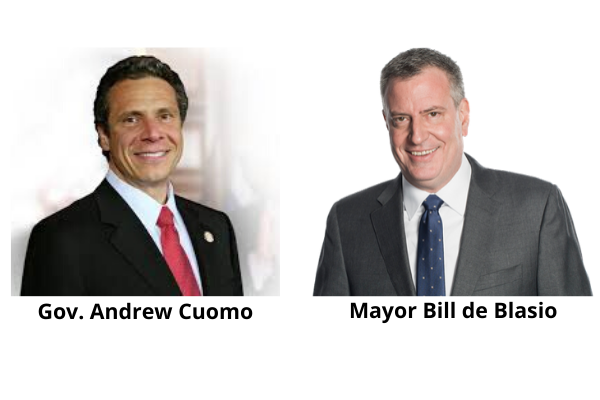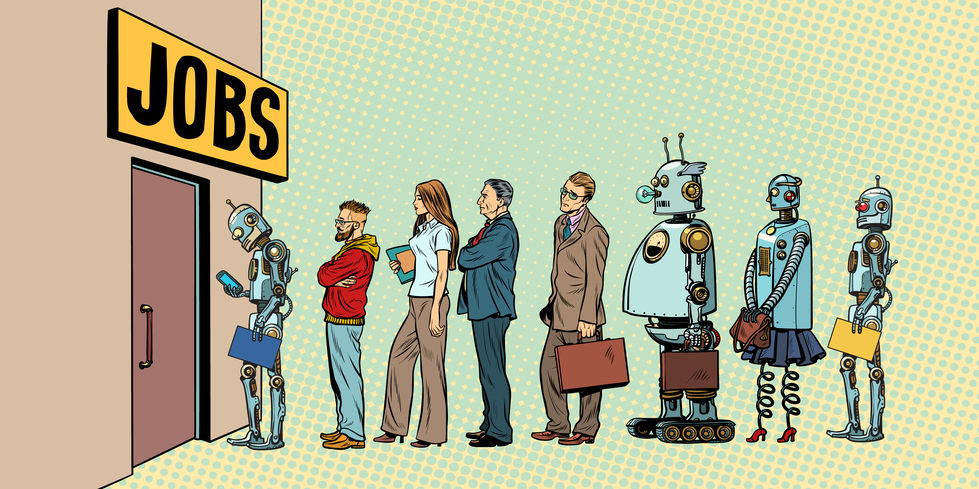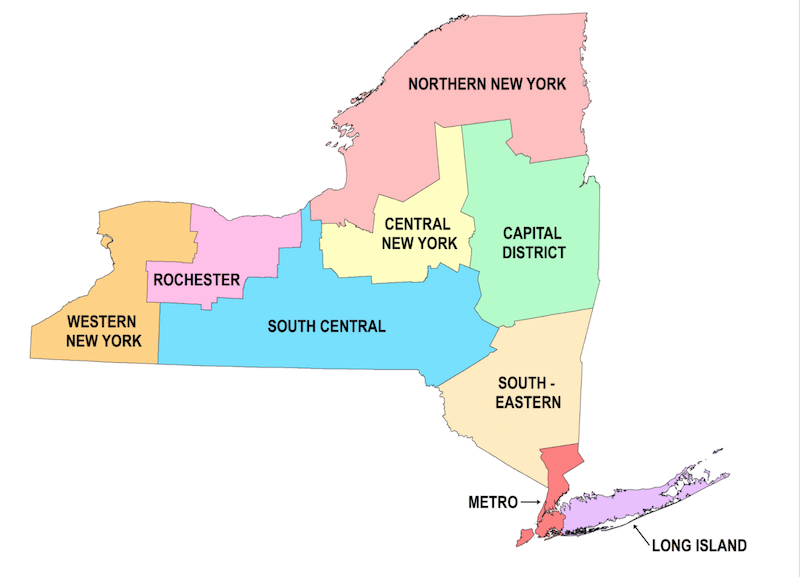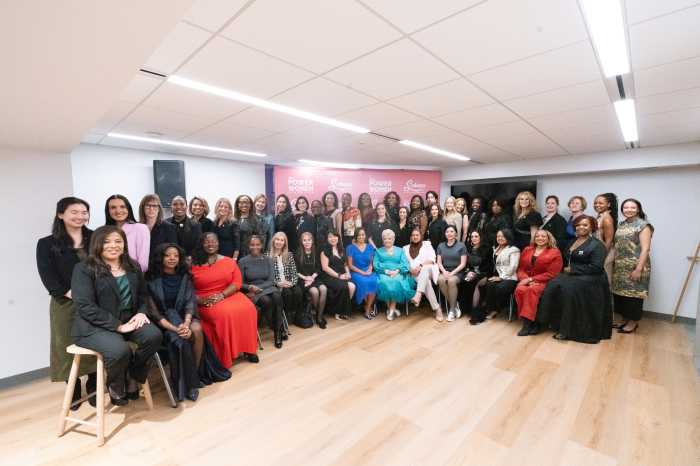As More Regions Pass the OK Mark, NYC Far From it
As Governor Andrew Cuomo’s “NY On Pause” comes to a close on Friday, four out of the 10 NY regions have met the criteria to enter into Phase one.
Mohawk Valley, the North Country, Southern Tier and the Finger Lakes have all seven requirements- hospitalizations, hospital deaths, new hospitalizations, hospital beds, ICE beds, tracing- met, but New York City is the furthest from reopening as of late.
“We’re going to be slow and steady here in New York City. We’re going to be very careful,” said Mayor Bill de Blasio, in an interview with CNN about reopening bars and restaurants.
While New York has only met four of the seven benchmarks, as of Thursday, the last three are pointing in the right direction with a steep decline in daily hospital admissions along with the number of ICU patients.
To open, Cuomo wants to ensure the proper mechanisms are in place to make sure a spike in deaths doesn’t occur. That means there has to be an implemented system of contact tracing and a third of the beds in the hospital and ICU units are available. There also has to be an established control room in each region that closely monitors the region as it begins its reopening phases.
Worst case scenario would be to pause reopening if a region fails at one of the seven requirements to reopen, said Cuomo.
To read more on this story, go to NBCNEWYORK.com
NYC vs NYS: Who’s Got the Right Numbers?
 Mayor Bill de Blasio and Governor Andrew Cuomo, who have a long and fraught history of disagreements, can’t agree on how many people New York City has been lost due to coronavirus.
Mayor Bill de Blasio and Governor Andrew Cuomo, who have a long and fraught history of disagreements, can’t agree on how many people New York City has been lost due to coronavirus.
According to the city, the numbers recorded are as high as 20,316 confirmed and probable deaths from COVID-19, as of this Wednesday. But according to Cuomo’s office, that number is far too high, having only recorded 14,380 in the five counties comprising New York City.
Public health experts weighed in that the city’s number looks closer to the truth than the states recorded numbers.
“It’s so important that we try to get these numbers as close to accurate in real-time as possible, because we are using them as a guidepost for what we are doing for the broader population. They’re not just numbers. There are implications for our public health policy and our daily behavior.” said Sabrina McCormick, an associate professor of environmental and occupational health at George Washington University.
The reason for the feud lies in the fact that the state has not included probable deaths because those people were never tested for coronavirus. The city, however, began counting those deaths as of April 14, causing the death toll to climb way past what the state recorded.
“I think we’re going to find, when all is said and done, that the numbers are much different than we actually thought they were,” Cuomo acknowledged last week. “And I think it’s going to be worse when the final numbers are tallied. We’re also not fully documenting all the at-home deaths that may be attributable to COVID, so I think the reality is going to actually be worse.”
Not counting probables could leave a lot of room for error, according to Dr. Sally Aiken, president of the National Association of Medical Examiners, told Politico. “In certain circumstances, people weren’t tested. Tests weren’t available. The tests have known false negatives. I don’t know why they wouldn’t count probables.”
Not included in the state’s count are people who have died from not seeking medical help from fear of catching COVID-19, or people dying from the disease before we knew about it.
According to Politico, people familiar with the matter said Cuomo’s office didn’t make City Hall’s effort to get the numbers on cases and fatalities easy, at times withholding them until Cuomo went public with them in his press conferences.
To read more about this, go to POLITICO.com
49-Year-Old Man Celebrates His Release from Hospital

Tom Berisha, 49, who spent 27 days fighting the coronavirus, was released with a celebratory send-off by the staff of the New York-Presbyterian Hospital in Manhattan.
“I get to celebrate two birthdays now: my discharge day and my actual birthday,” Berisha said, according to a news release from New York-Presbyterian. “The staff didn’t give up on me. They did amazing work.”
As he was being wheeled out of his room on the day of his discharge, nurses started following his wheelchair and people were dancing in the hallway.
“This was a special patient because every day was a new plan of care, so many different members of the staff were involved,” Cynthia Quezada, clinical nurse manager at the hospital, said.
The lobby was filled with staff members from the hospital, including Berisha’s wife and two children. In an emotional moment, Berisha stood up in his wheelchair to celebrate in the cheering and good fortune.
Flora Berisha showed her gratitude for the miracle, saying that the family is happy and grateful that he came home.
According to media reports, hospitals from all across the nation have been playing appropriate and happy music as COVID-19 patients are released. Some of those songs include the Beatles, “Here Comes the Sun” and the Police’s “Every Breath you Take”
Hospitals across the country have taken to playing celebratory music to mark the release of COVID-19 patients. “Here Comes the Sun,” “Every Breath You Take,” and “Don’t Stop Believin'” are several of the popular choices across the tristate area.
To read more on this story, go to Fox News.
Unemployment Continues to Climb: 36.5 Million

The official number for filed unemployment claims across the United States have reached a deafening high of 36.5 million, according to government reporting.
“This is a very protracted, painful situation for the labor market,” said Rubeela Farooqi, chief U.S. economist at High-Frequency Economics, “and I just don’t see anything positive.”
According to a survey conducted by the Federal Reserve, for households that were making less than $40,000 a year, almost 40% lost their jobs in March or in the start of April.
It doesn’t look much better for those places that are beginning the process of reopening. Workers have been facing reduced hours, paychecks, and face the heightened threat of possible infection. Battling all this plus deciding if it’s worth going back to work has been on the minds of many Americans.
“It’s a very tough choice for those in the service industry and those at the lower end of the pay scale,” Ms. Farooqi said. “Do you go back and risk getting sick, or have no money coming in?”
According to Michelle Meyer, head of U.S. Economics at Bank of America, she doubts that the number of re-hires outnumbers those fired. The hit the economy has taken has rippled beyond the early shutdowns in retail and hospitality to professional business services, manufacturing and health care.
Meyer used Georgia as a prime example of this.“The reopening is bringing people back to work, reducing the total amount of people receiving unemployment insurance,” Ms. Meyer noted. “But the number of initial jobless claims is still rising, which suggests there is still residual weakness in the economy.”
To read more on this, go to New York Times.






